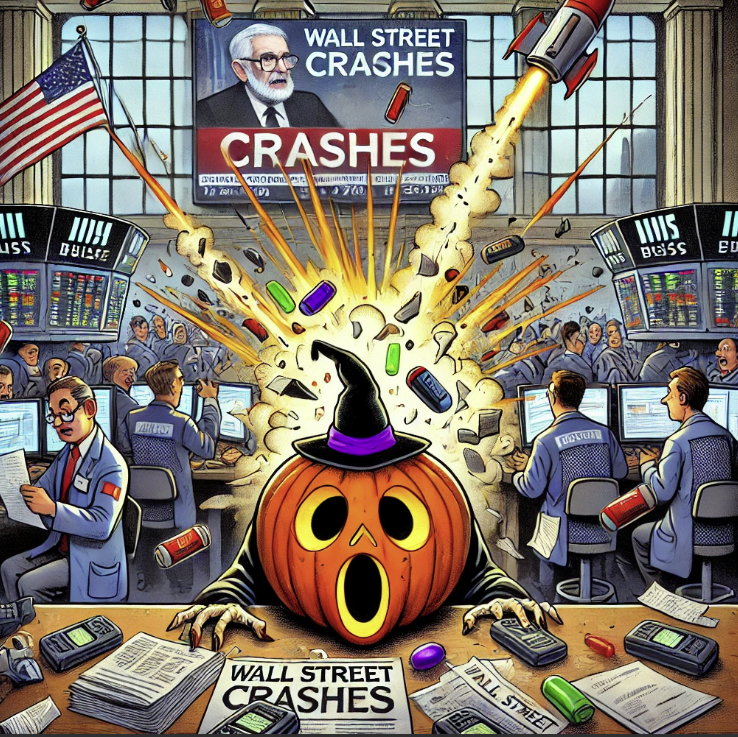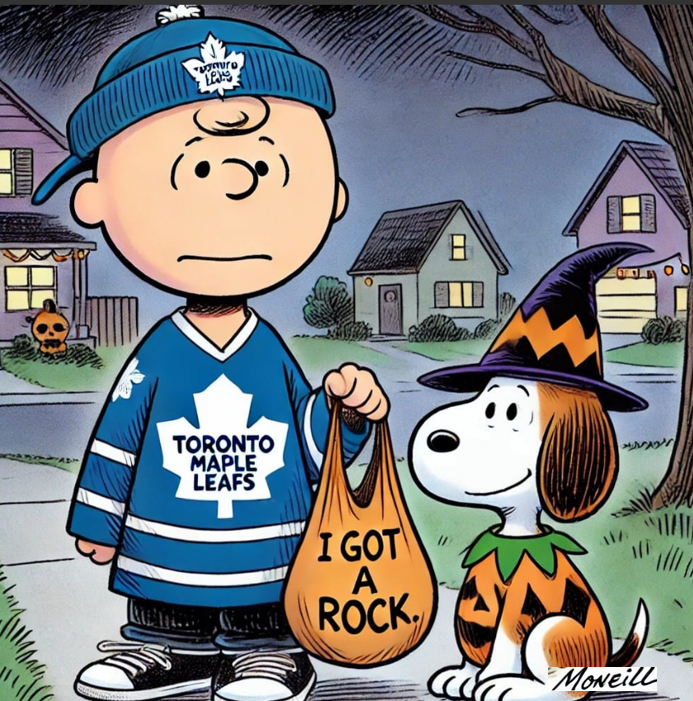
By Michael O’Neill
“Trick or Treat!”—that phrase echoes through the streets each October 31 as thousands of costume-clad, candy-hungry kids go door-to-door seeking a sugar rush. But in the global financial markets, October brings rushes of a different kind, as market volatility lurks at every corner. Just as ghosts jump out of nowhere, economic shocks, unexpected data, or whispers from the Fed can send investors into a frenzy. Historically, October has been a graveyard for bulls—just ask 1929 or 1987, and it hasn’t been a picnic since Lehman Brothers collapsed in 2008.
In October 2014, bond traders were rattled by “The Flash Crash,” which saw the US 10-year Treasury yield plunge by 34 basis points in minutes. Just a few years later, in 2018, technology stocks took a beating due to escalating trade conflicts and rising interest rates. In October 2021, COVID-induced supply chain disruptions pushed Treasury yields from 1.44% to 1.87%, while WTI oil surged 16%. October 2023 wasn’t much better—the S&P 500 dropped nearly 4%, and the US 10-year Treasury yield spiked 50 basis points.
What’s in Store?
This October could be a wild one. Geopolitical tensions are at a boiling point. On September 17 and 18, Hezbollah terrorists with 80s-era pagers and walkie-talkies brought the Middle East to the brink of war. A full-scale conflict between Israel and Hezbollah, backed by Iran, would send shockwaves through global financial markets. Energy prices would spike as the risk of Middle Eastern oil supply disruptions intensifies , increasing global inflationary pressures, and throwing central bank easing plans into disarray.
Profits Over Politics
Traders do not seem to care. For many in North America and Western Europe, tensions in the Middle East are par for the course. Arab nations and groups like Hamas and Hezbollah have launched numerous attacks since Israel’s creation in May 1948-each one a failure. Traders in cities like New York, London, and Zurich know the history well but, as long as the hostilities remain localized, greed overshadow humanity.
Regular or Jumbo Rate Cuts?
Jumbo is how analysts are describing Fed 50 bp rate cuts although when compared to the 4 consecutive 75 bp rate hikes between June 15 and November 2, 2022, Jumbo hardly fits the bill-“petite-large” perhaps? No matter how you describe the next Fed move, the odds for another 50 bp cut are 58%.
To Infinity and Beyond—or 6,000?
A few bold equity analysts are predicting the S&P 500 will hit 6,000 by year-end. That’s just 4.6% higher than where it closed on September 24, which doesn’t seem like much of a stretch. Their predictions are based on aggressive Fed rate cuts and the hope for a soft landing for the U.S. economy. They do not seem overly concerned about the risk of geopolitical flare-ups or rising oil prices.
What If?

What if the Middle East conflict escalates and oil production is disrupted? A few well-aimed missiles could cripple Iran’s oil industry, sending crude prices through the roof. The situation could worsen if Houthi rebels in Yemen ramp up attacks on Red Sea shipping. Oil prices would skyrocket, especially if China’s latest stimulus efforts spur economic growth and boost demand for crude. And let’s not forget Russia. An aggressive Ukrainian offensive has prompted Putin to threatened nuclear retaliation, claiming to feel increasingly threatened by NATO. Geopolitical risks remain high. If so, rate cuts and inflation would be the least of our worries.
Loonie Bulls Need a Reality Check
The Canadian dollar (Loonie) has been soaring, and Bank of Canada Governor Tiff Macklem is goosing it. On September 24, Macklem outlined a cautious yet optimistic monetary policy outlook in Toronto. He highlighted that inflation is back at the 2% target, and the Bank of Canada is focused on maintaining price stability within the 1%-3% range. Recent rate cuts totaling 75 bps reflect easing inflationary pressures, and Macklem suggested that more cuts could be on the way, depending on incoming data.
However, what Macklem didn’t say is that the Bank of Canada might cut rates by 50 bps on October 23 because the Canadian economy is in worse shape than some data suggests. The labor market is particularly weak, with the number of new jobs failing to keep up with Canada’s growing population.
A Fraser Institute study from July noted that, over the past decade, Canada’s immigrant population has shifted toward those with less education and fewer skills, contributing to stagnant labor productivity growth. The OECD projects that Canada will have the lowest GDP per capita growth among developed countries between 2030 and 2060. By 2060, Canada’s GDP per capita will be below the OECD average by $8,617. So much for “Sunny Ways.”
So why would anyone sell USDCAD in this environment? The drop to 1.3420 probably has more to do with large, long USDCAD positions getting stopped out on the break below the 1.3460-80 level, than it does with foreign investors having a sudden desire to own Canadian dollars. The technicals agree. The pair is oversold, with Bollinger Bands at 3 standard deviations and RSI at extreme levels. In this environment, USDCAD may hit 1.3700 before it sees 1.3300.
October is likely to be a “Charlie Brown Halloween” for Canadians. While everyone else gets a treat, Canada might just get a rock.






